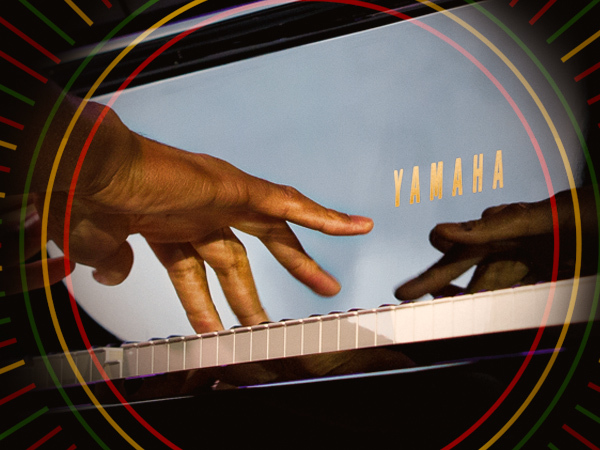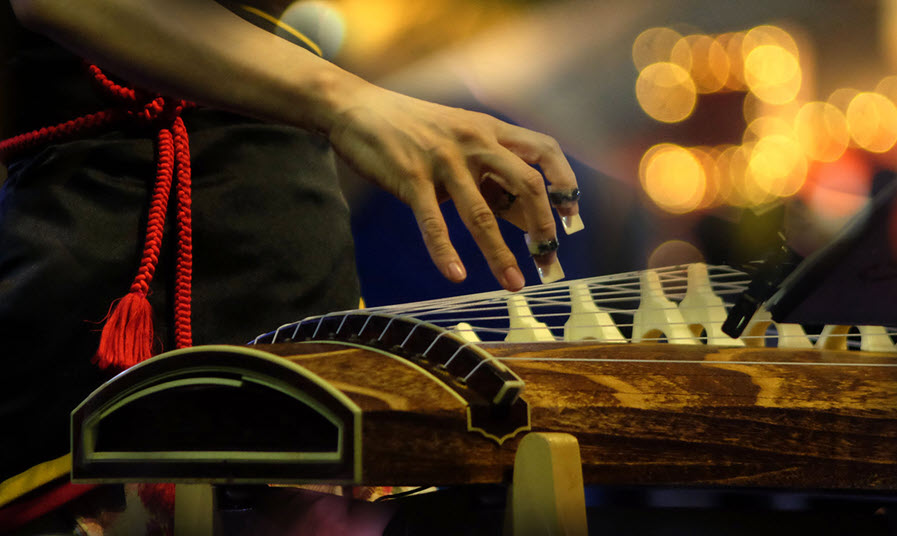Breakthroughs: A History of Yamaha Product Announcements at NAMM
Decades of innovation on display.
Ever since the formation of the Yamaha Corporation of America in 1960, the company has been unveiling new products at the annual NAMM (National Association of Musical Merchants) show. Many of those products are now regarded classics — breakthroughs that had a major impact on music-makers and music lovers alike. Here’s a look at some of the most important Yamaha product announcements made at NAMM through the decades.

FG180 acoustic guitar (1966)
The FG180 was developed using a proprietary design and was engineered in-house. Its symmetrical dreadnought-style body offered a rich, bright tone and superior sound projection. (This was one LOUD guitar!) The original FG180 lives on in the current series of FG Red Label steel-string folk guitars inspired by the iconic Yamaha “red label” guitars of the 1960s — the instruments that were onstage at the original Woodstock.
CF Concert Grand piano (1967)
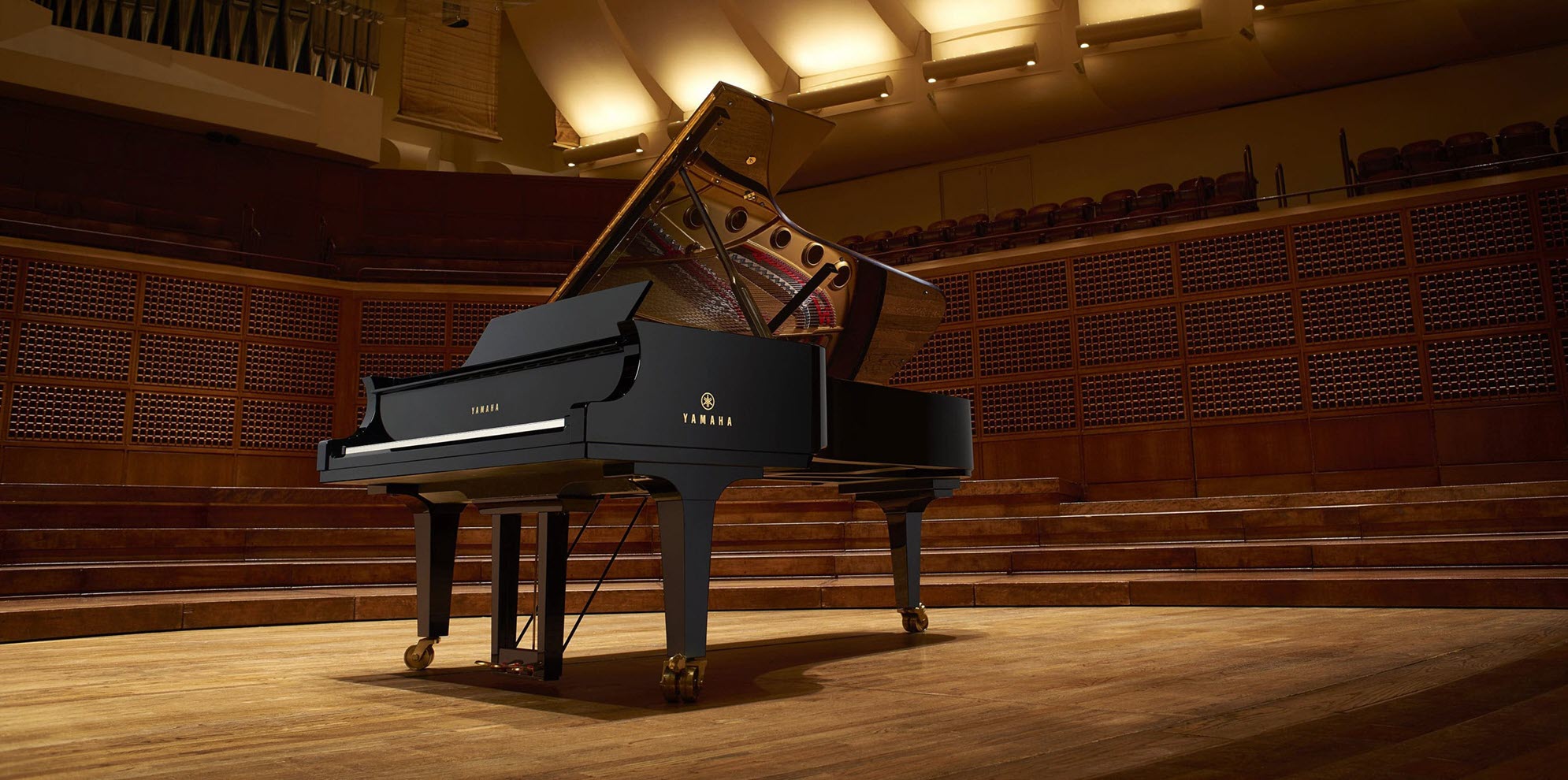
In 1965, Yamaha began working with lauded Italian piano technician Cesare Tallone. Together they explored all aspects of piano design, creating many prototypes that were evaluated by world-class artists and then refined further. This valuable real-world feedback resulted in the creation of the first CF Concert Grand piano, first unveiled to the public in 1967. The instrument was quickly adopted by leading artists of the era and soon become a mainstay in prestigious concert halls and at festivals and competitions the world over.
GX1 “dream machine” organ (1975)
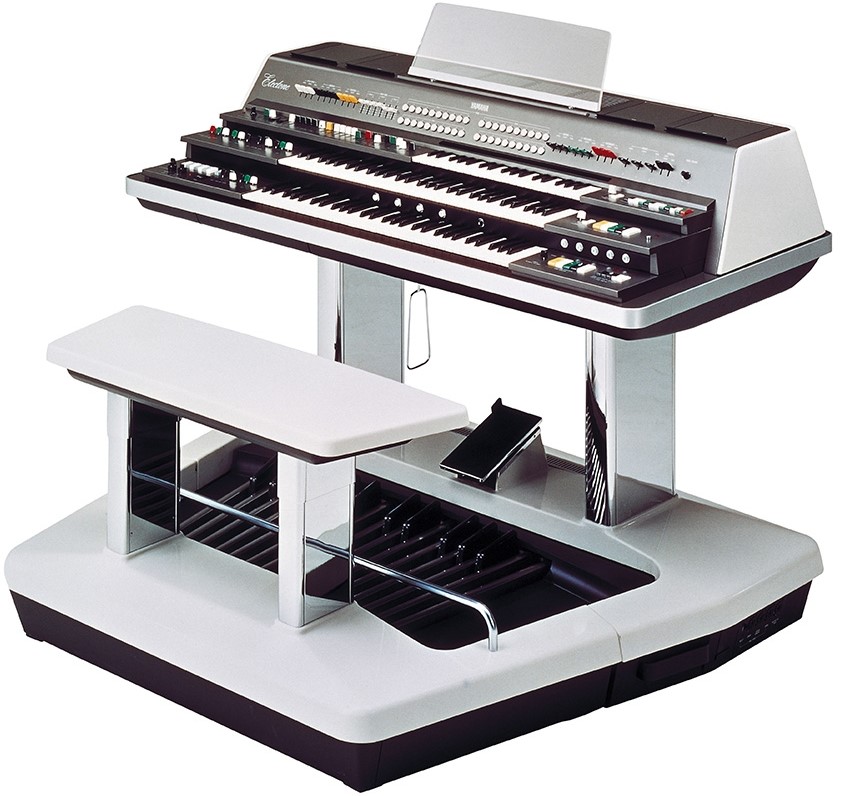
The GX-1 was a behemoth electronic organ popularly called the “Dream Machine.” Looking back today, it’s clear that the instrument was actually a synthesizer, and it likely was the first true polyphonic synth developed. The instrument has become legendary, and was used by artists such as Keith Emerson, John Paul Jones of Led Zeppelin, Stevie Wonder and ABBA’s Benny Andersson.
CP80/70 Stage Piano and SG2000 electric guitar (1976)
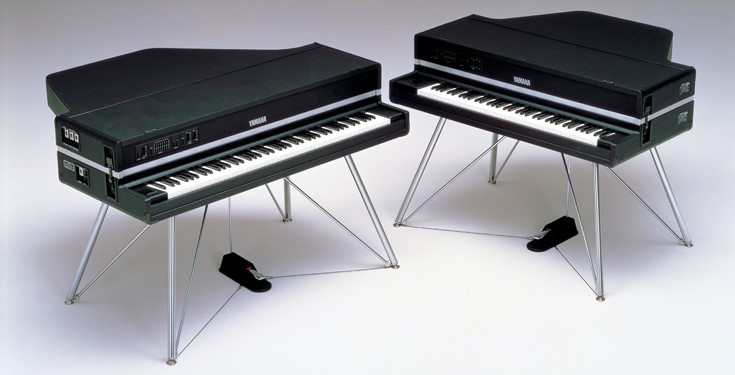
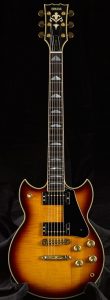
Yamaha CP80 and CP70 electric grand “stage” pianos were used widely on records and in concert by major artists throughout the 1970s and 1980s — and some even still use them to this day. They delivered the depth of expression of an acoustic instrument while holding their own when performing on stage with electric guitars played at full volume. They featured the same frame action and frame construction as an acoustic piano, but could be split into two cases for storage, and utilized an electric guitar-style pickup system to pick up the sound for amplification via an amplifier.
Characterized by a sweetly beguiling sound made famous by Carlos Santana in his live performances and records of the era, the Yamaha SG2000 electric guitar offered superb sustain thanks to a single-piece construction that effectively transmitted the vibrations of the strings to the body, along with a sustain plate embedded directly into the body below the saddle. The SG2000 also featured a unique open humbucker supported at three points for easy adjustment of the pickup height and angle.
NS-10M studio reference monitor (1977)
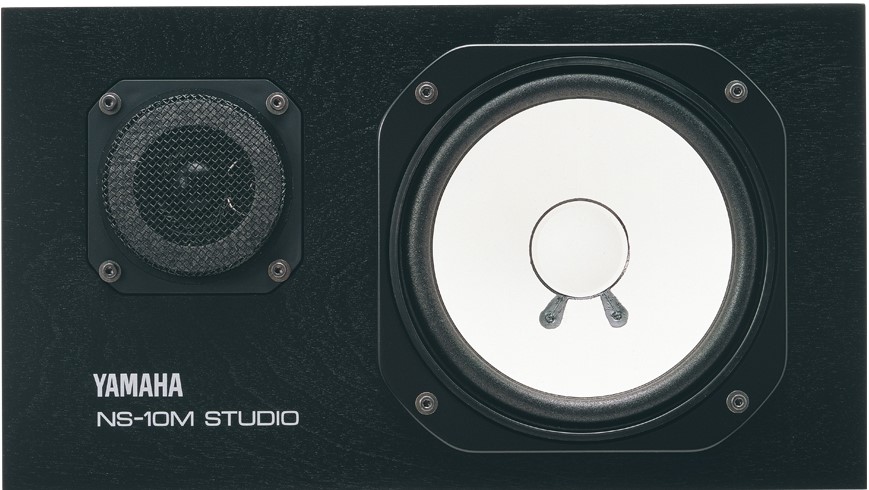
A mainstay in countless recording studios for more than four decades, these beloved white-coned reference monitors continue to be a force to this day, resulting in Yamaha winning a Technical GRAMMY Award in 2007. Originally designed as a Hi-Fi speaker for consumers, the NS-10 soon became a phenomenon in the recording world thanks to its uncanny ability to expose any sonic flaws in the audio, allowing for corrections to be made during the production process. Its legacy continues today in the current line of Yamaha HS Series powered speakers … which come complete with white woofers.

BB2000 electric bass (1978)
The first Yamaha BB (short for Broad Bass) models first appeared in 1977, but it was the BB2000, released a year later, that found tremendous popularity among many bassists of the 1970s and 1980s, who used it in a wide variety of genres from jazz-fusion to rock and pop. It featured a 5-ply neck-through design that conveyed the vibrations of the strings to the body without any loss for impressively long sustain. The BB2000 also featured a split-pickup design unique to the BB Series at the time, with the pickup for the first and second strings lying closer to the neck and separated from the pickup for the third and four strings, which was closer to the bridge.
PS-1/PS-2/PS-3 portable keyboards (1979)
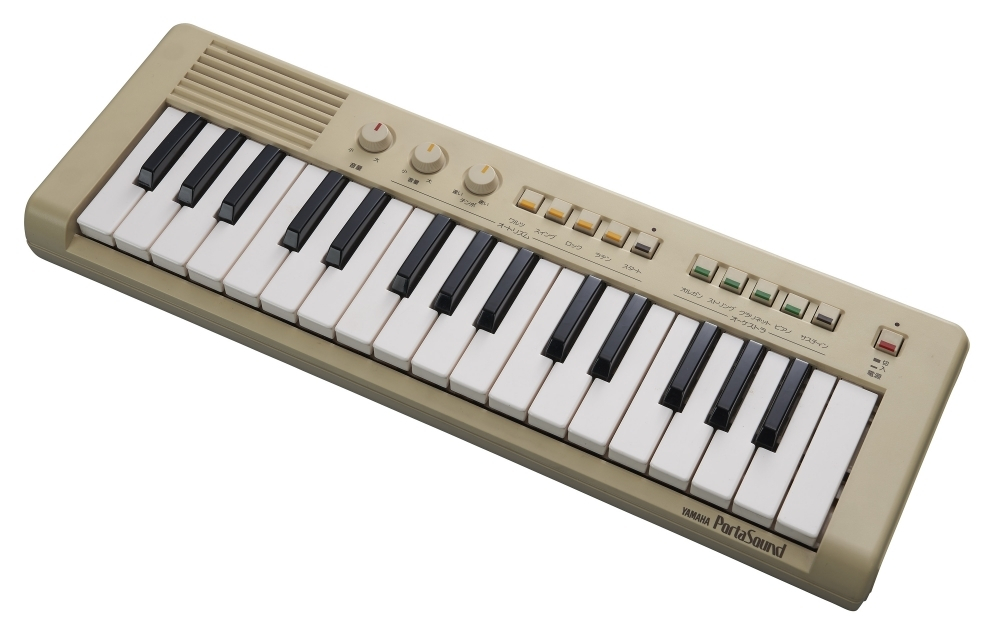
Yamaha PS Series portable keyboards were developed for household use by students. Small, lightweight, and able to run on batteries, these instruments quickly won acceptance by beginners and teachers for their simplicity and low cost. The first three models included the PS-1, which featured a 32-key mini-keyboard and four sounds (organ, strings, clarinet and piano), as well as four internal rhythm patterns; the PS-2, which offered a 37-key mini-keyboard and an Auto Bass Chord function; and the PS-3, which boasted a 44-key mini-keyboard and eight onboard sounds.
Disklavier (1982)

The Disklavier is fundamentally a traditional acoustic piano with a built-in record-and-playback system — a product category known as a reproducing piano. The term “Disklavier” is a combination of the words disk (as in floppy disk) and Klavier, the German word for keyboard; at the time that the first Disklavier was introduced, recordings were stored on 3 1/2 inch floppy disks. The first Disklavier model was the MX100A, which was available in an upright piano called the U1, with the control unit built into the cabinet. The MX100A featured a remarkably sophisticated recording system for its day, including hammer sensors — an innovation that was not available on most reproducing piano systems from other companies at that time. The pedal sensors were limited to recording only two values: on and off (fully down and fully up), but even this first model included fundamental features that have been included on every Disklavier since, such as tempo control, transposition, and connectivity with external MIDI devices.
DX7 synthesizer and Clavinova digital piano (1983)

In 1967, composer and electronic musician John Chowning discovered that modulating one computer-generated waveform with another at high frequency rates produced a timbral shift, leading to the birth of FM (Frequency Modulation) synthesis. Yamaha eventually licensed and further developed the technology, culminating in the 1983 release of the DX7 synthesizer, which quickly became the best-selling synthesizer of all time and an instrument that fundamentally changed the sound of popular music from that point forward.
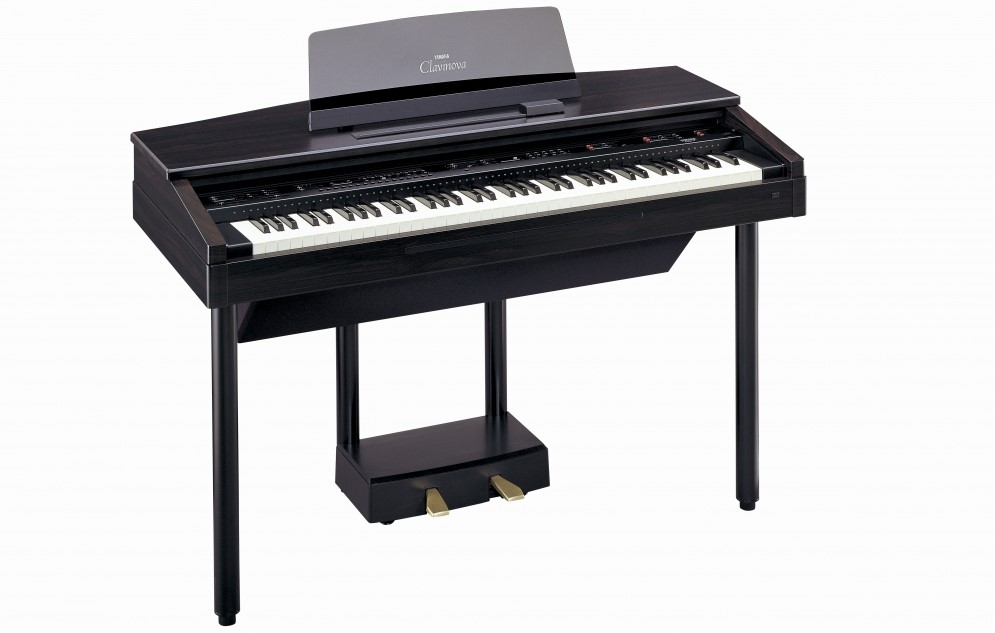
The first-generation CVP Series Clavinova combined pianos with electronics. They featured a Piano ABC (Auto Bass Chord) function, the precursor of the Automatic Accompaniment function still included in current CVP Series Clavinovas, as well as ROM Music, which introduced new ways to enjoy music by enabling users to call up their favorite songs and play with the backing of a virtual orchestra.
TX816 FM Tone Generator System (1984)
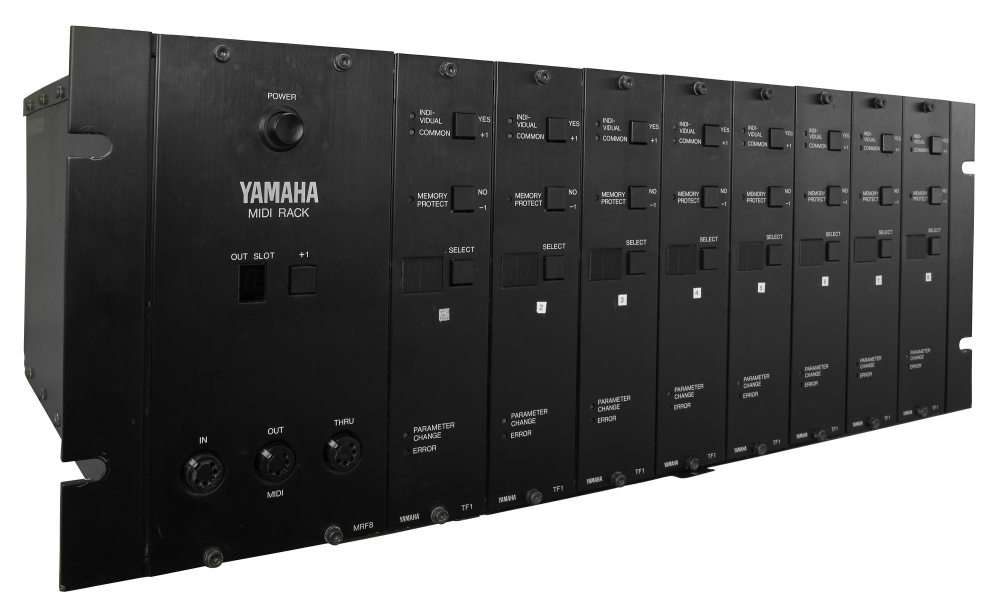
The TX816 was a rack-mountable FM tone generator system equipped with the power of eight DX7s. It allowed users to create ensembles by functioning as a multi-tone generator when connected to MIDI sequencers, but was more often used to create powerful sounds by layering sounds from multiple tone generators simultaneously. At the time, most synthesizers had monaural outputs, but the TX816 provided outputs for each module, allowing panning across the entire stereo soundstage.
SPX90 multi-effects processor (1985)

This groundbreaking digital multi-effects processor featured reverb, delay, chorus, pitch change and a wide variety of other effects in an affordable rack-mount unit. In its day, it was considered almost miraculous that so much power could be packed into such a small space, and it quickly became a mainstay in recording studios, as well as in live sound racks … and it’s still in wide use today.
SHS-10 FM/MIDI keyboard and WX7 Wind MIDI controller (1987)
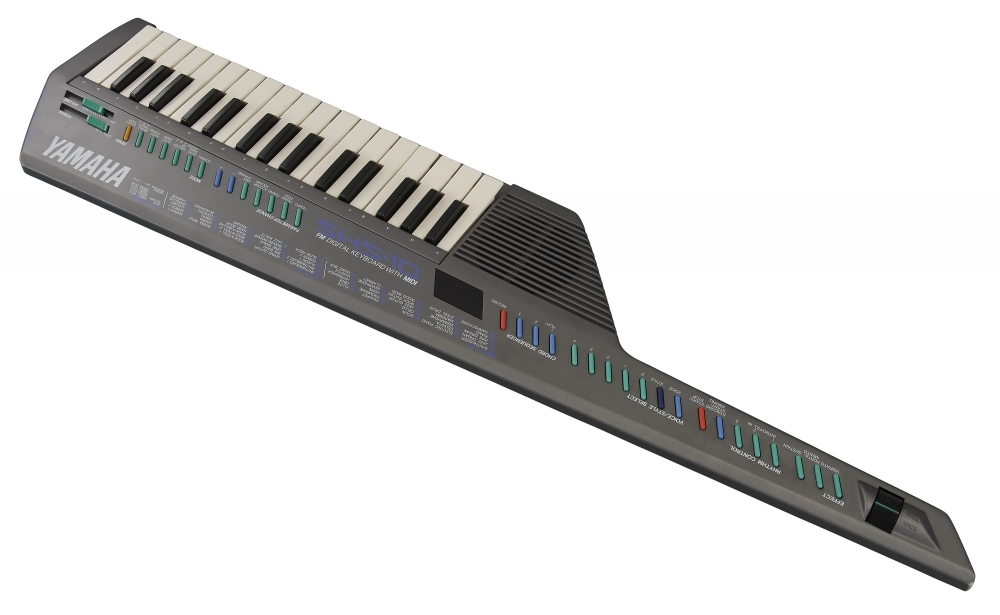
The SHS-10 was a lightweight keyboard that could be strapped over the shoulder like a guitar, allowing the performer to strut the stage as they played. It came with onboard FM sounds as well as an Auto Bass Chord function. Because it was outfitted with a MIDI OUT port, it could also be used to control external tone generators.
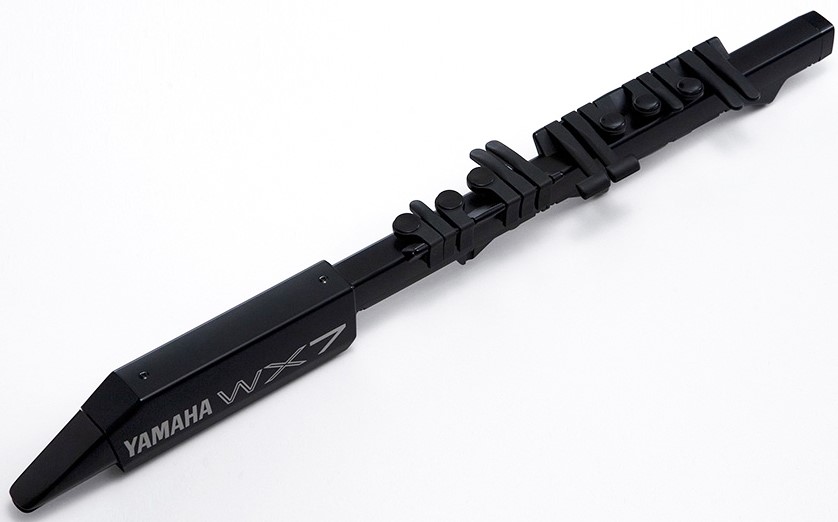
The WX7 was developed to enable wind players to control MIDI tone generators using the same playing techniques as they would with a saxophone or clarinet. Its design retained only the essential nature of a wind instrument: a mouthpiece that allowed the player to shape timbre, keys to denote pitch, and a tube to support the keys — all other functions and ornamentation were removed. Honed to a simple and minimal configuration, the WX7 defined a standard for digital wind controllers for decades to come.
SILENT Piano™ (1993)
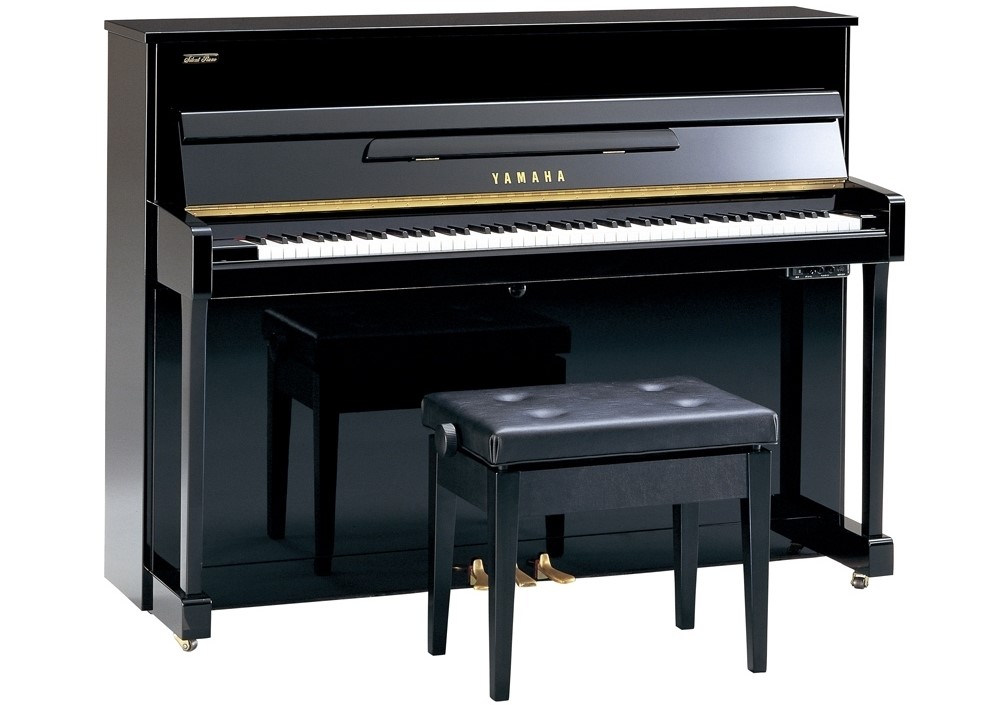
At first glance, a Yamaha SILENT Piano looks just like a normal acoustic piano with weighted keys, pedals, strings, and hammers. The first of these, debuted in 1993, was the U5AS upright model outfitted with player piano capability plus a silencing function to enable nighttime practice, when the hammers no longer hit the strings so that the sound can be heard only via headphones. Instead, a series of optical sensors beneath the keyboard and pedals measures the nuances of the playing and then uses them to trigger the digital sound of a piano, which can be turned up or down as desired — without disturbing anyone in proximity. Today’s SILENT Pianos are available in a variety of upright and baby grand models; some even include sounds sampled from the famed line of Yamaha CFX and CFIIIs full-size concert grands.
02R small-format digital mixing console (1995)
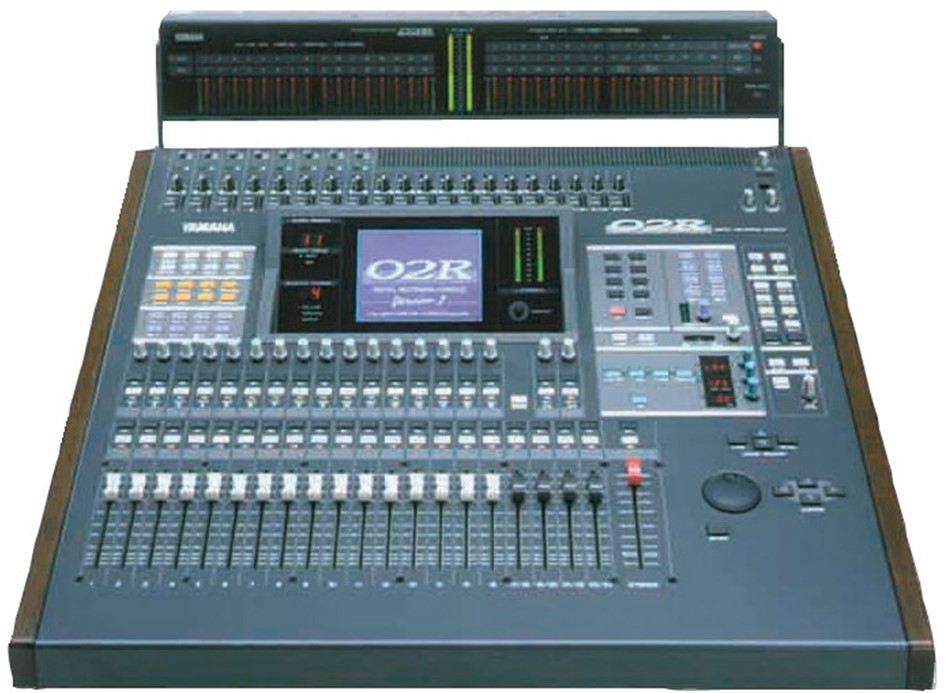
This best-selling digital recording console helped spark the establishment of project studios and personal studios throughout the world, and it was also widely used for live sound for many years. It housed up to four I/O (input/output) cards compatible with AES/EBU, ADAT and other digital audio formats to provide an open architecture design for creating optimal recording environments to fit a wide range of needs. The 02R provided 44-channel mixing capacity, 4-band EQ, a dynamics processor, input display, built-in effects and automated mixing functions.
DTX electronic drums (1996)
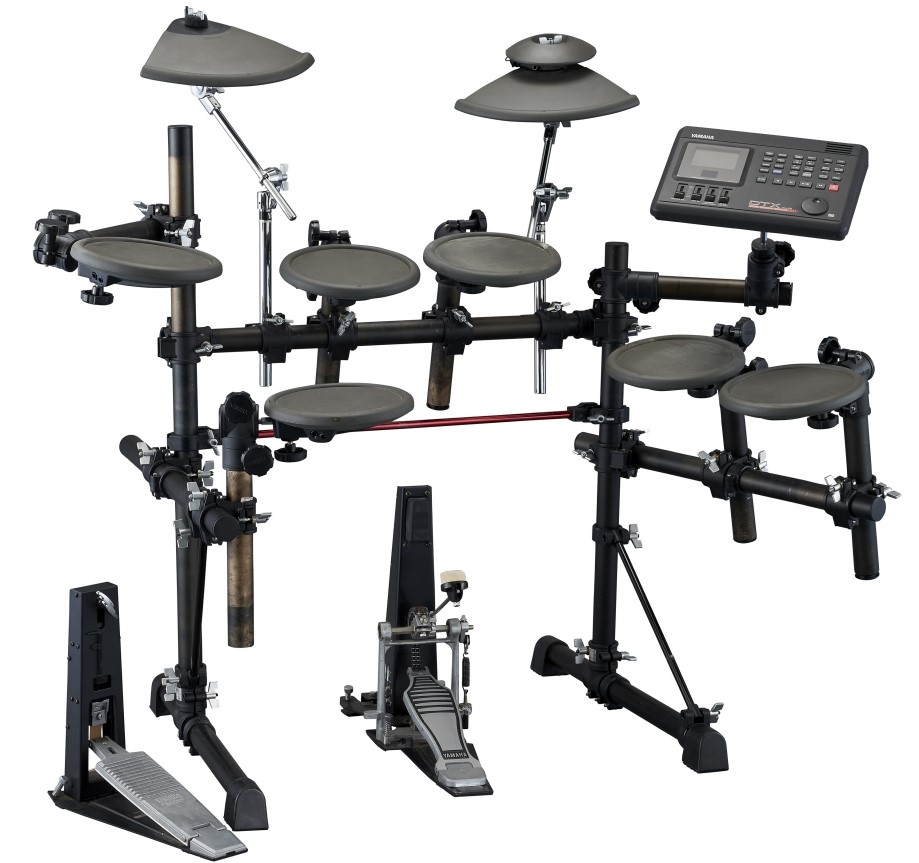
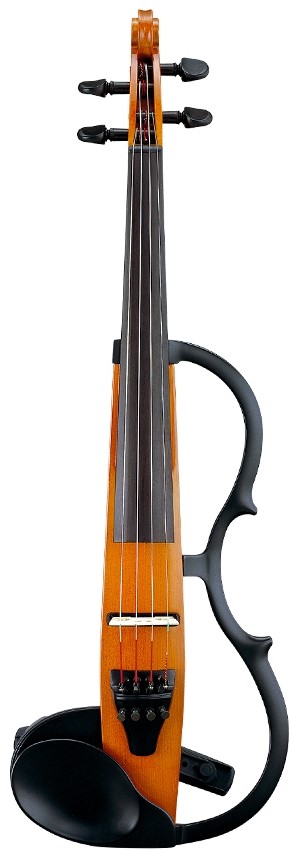
The DTX2 (shown above) was the first model in the line of Yamaha DTX Series electronic drum kits. Equipped with virtual session features and advanced pad design, they were perfect for private practice and enjoyment at home, leading directly to the development of more advanced products such as the current Yamaha DTX8 and flagship DTX10 drum kits.
SV-100 SILENT Violin™ (1997)
The SV-100 was the first SILENT Violin. By removing the sound box and leaving only the frame, the feel of playing an acoustic violin was preserved while achieving a dramatically quiet sound level, winning great favor from violin enthusiasts concerned about their practice environment.

SLG-100N SILENT Guitar™, PM1D large-format digital mixing console and MOTIF synthesizer (2001)
The SLG-100N nylon-string SILENT Guitar, released at the dawn of the 21st century, was the precursor to today’s line of SLG-200 Series instruments. Its ghostly, minimalistic design (like a guitar without a body) delivered the sound of a natural acoustic guitar but with ultra-quiet results, allowing players to practice anywhere without disturbing others. Its lightweight and compact body lent itself to both travel and playing live.

The PM1D was the first in the flagship PM Series of Yamaha professional digital mixing consoles. It quickly became the mixer of choice by top live sound mixing engineers everywhere and became used widely in the world’s leading performance venues. Its innovative concept of making the controller, DSP engine, and I/O unit into components made it possible to build a system with flexibility to handle anything from a temporary PA setup to concert hall audio or broadcast equipment, with a unique mirroring mode for a high level of reliability.

The MOTIF synthesizer was a cutting-edge production tool that was developed to give form to artists’ musical ideas and inspirations as “motifs” in a wide variety of music production scenarios. It featured an Integrated Sampling Sequencer that provided an innovative production environment in which MIDI voices and samples could be combined at a high level, and was capable of synchronizing sample loops and MIDI sequences in real time. It was also equipped with expansion slots compatible with modular synthesis plug-in systems and a real-time control surface.

SLB200 SILENT Bass™ (2004)
The first Yamaha SILENT Bass featured a unique hollow body construction with a resonating chamber and newly developed pickups to produce a natural feel and sound similar to a standard upright bass The neck, strings, bridge, and tailpiece all used the same quality of material as a contrabass, making for a natural playability that added to its appeal. The current next-generation SLB300 SILENT Bass offers advancements that allow the player to control every aspect of their sound with the press of a button, including Studio Response Technology (SRT) that provides realistic body resonance so that the performer’s own playing technique and nuances are delivered without compromise. In addition to a piezo pickup and EQ controls, it also provides three different high-end microphone models, from the clear, warm sound of a dynamic to the rich timbre of classic vintage vacuum tube mics.
AvantGrand N2 and N3 hybrid pianos (2009)
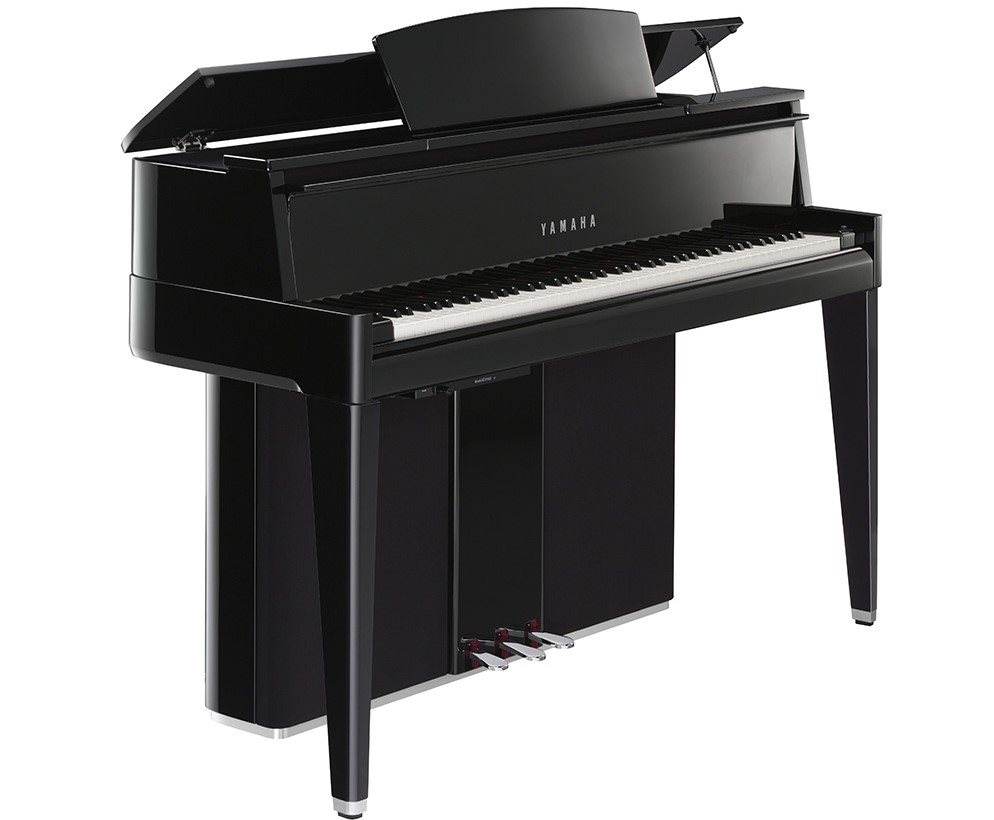
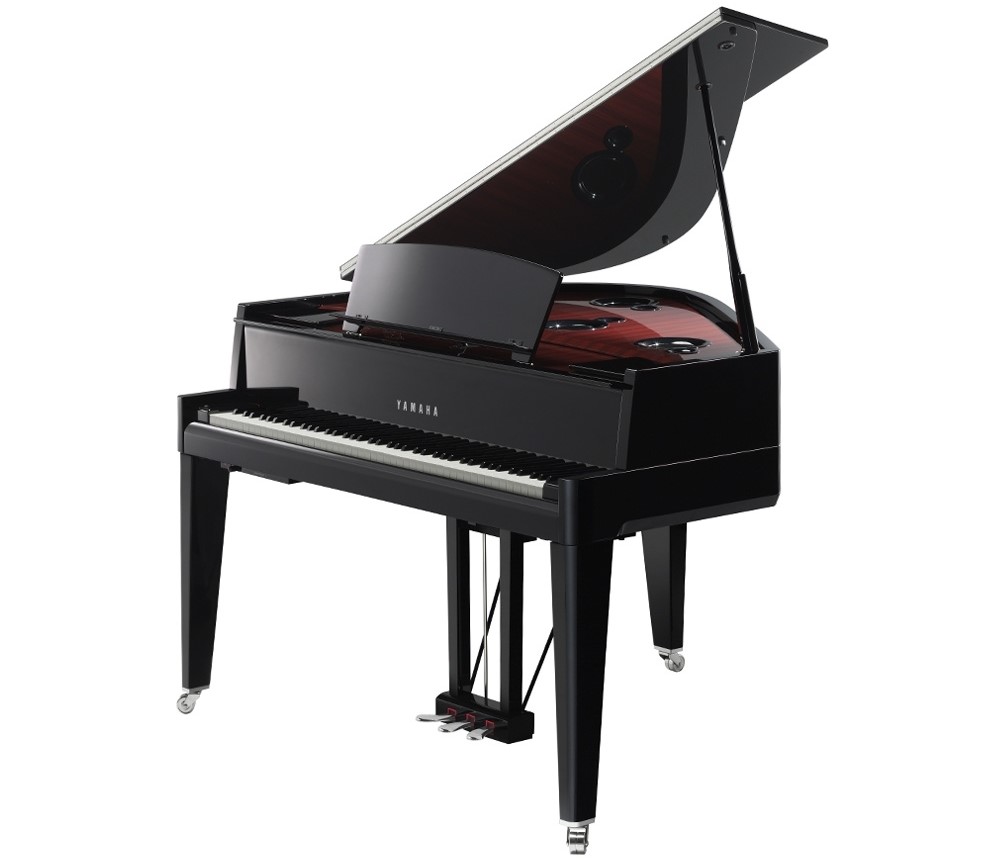
Yamaha AvantGrand Series hybrid pianos, introduced in 2009 with the N2 and flagship N3 models, condensed the elements of a grand piano into a compact form. Featuring built-in speakers and a wooden keyboard with the action and authentic touch of a grand piano, it faithfully reproduced the resonance of a piano soundboard thanks to a unique Tactile Response System that utilized digital technology to recreate the natural vibrations felt when performing on an acoustic grand.
CFX Concert Grand piano (2010)
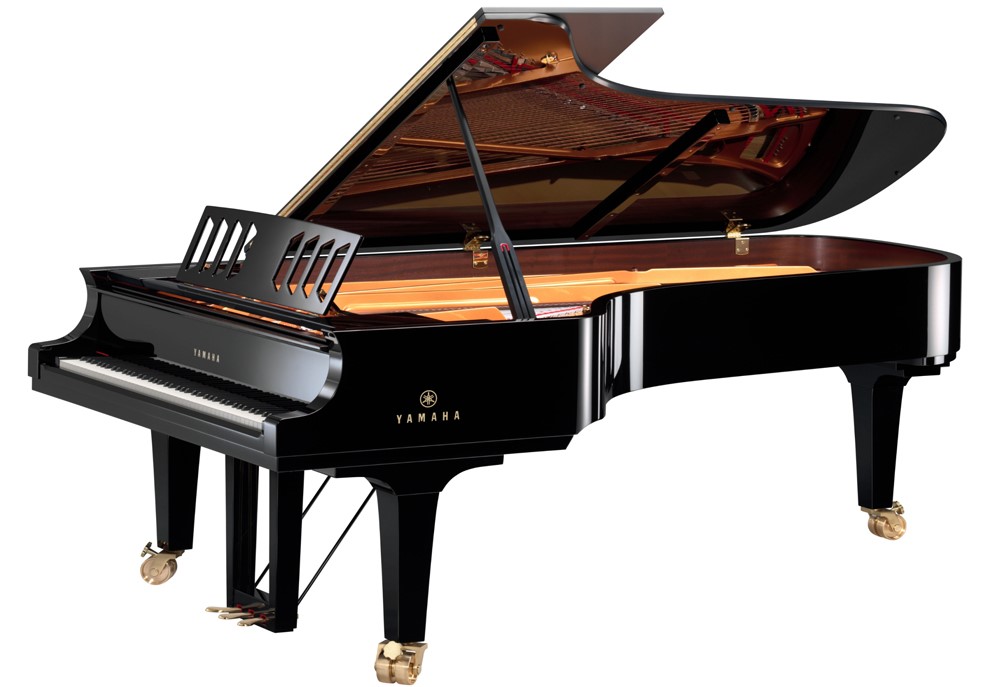
The next-generation CFX Concert Grand piano was the culmination of 12 years of development. All unnecessary inner strain in the instrument was removed, minimizing energy lost in the piano so that pianists could truly feel unified with the instrument, allowing them to fully focus on the music. All CFX grand pianos are crafted by hand, using the finest materials Yamaha has sourced or developed themselves. As a result, the range of expression and tonal colors possible have evolved to a new level.
THR desktop amps (2011)

Guitarists are familiar with the tube amp stacks that sound amazing when turned up loud on a big stage, and with combo amps that are a perfect fit for smaller venues and rehearsal. The release of the Yamaha THR Series ignored the convention that a practice amp should simply be a smaller version of a larger amp, creating a new product category designed around what players need when they’re playing at home. The sound and high-quality effects of large amps are packed into these bestselling “desktop” guitar amplifiers. Despite their compact body size, they offer the response of a large amp, along with built-in digital effects. Today’s THR-II models continue in that tradition, adding extra power and advanced technologies such as wireless capability.
TransAcoustic™ Piano (2015)
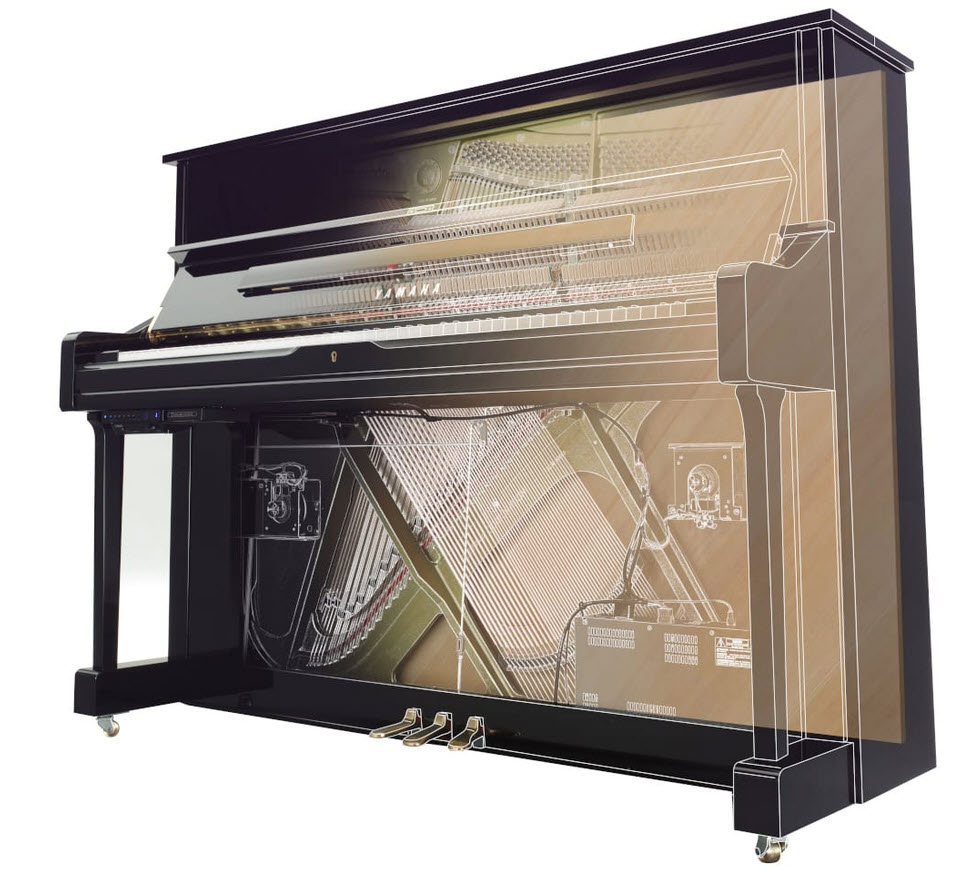

The Yamaha TA2 TransAcoustic piano, which debuted in 2015, is a true acoustic piano that uses its soundboard to naturally amplify digital sounds, essentially turning the instrument into an acoustic speaker. Touchless optical sensors mounted under the keys convert every keystroke and pedal motion into digital data, allowing you to transform a TA2 upright piano into a Yamaha or Bösendorfer concert grand, an electric piano, harpsichord or organ.
TransAcoustic™ Guitar (2016)
These extraordinary guitars provide built-in reverb and chorus effects without the use of external pedals, processors or amplifiers. The LL-TA was the first TransAcoustic guitar to be shown at NAMM; its western body produces a rich sound with wide dynamics. The current line of TransAcoustic guitars also includes concert-size and small “parlor” guitars, as well as a nylon-string classical model.
Genos digital workstation (2017)
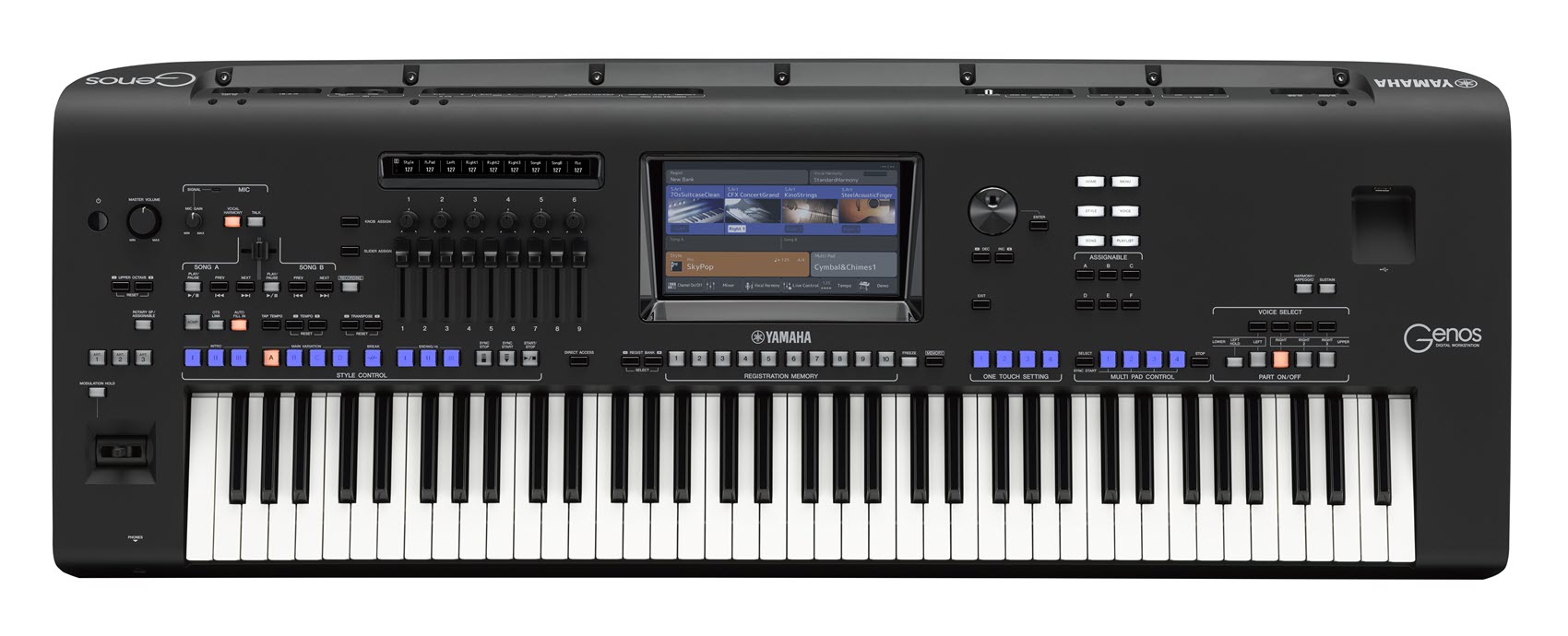
The flagship Yamaha Genos Digital Workstation is a powerful and versatile songwriting and performance tool. It boasts 1,710 instrument Voices, 550 accompaniment Styles and 216 arpeggios, intuitive control via a 9″ color touchscreen and assignable buttons, sliders and knobs with their own OLED display. With Genos, you can apply various vocal harmony effects to your voice as you sing, or you can use its Synth Vocoder to superimpose the unique characteristics of your voice onto synthesizer and other sounds.
STAGEPAS portable PA system (2018)

Yamaha STAGEPAS Series portable PA systems are simplicity itself. Each consists of two lightweight speakers, a pair of color coded speaker cables, a power cable, and a detachable mixer (with onboard effects) that fits neatly into the back of one of the speakers — and that’s it! With so few pieces to set up, you can have a powerful PA up and running within just a few minutes, quickly turning any space into a stage. The latest STAGEPAS 400BT, 600BT and STAGEPAS 1K models add wireless Bluetooth® capability; all you have to do is pair your device and you’ve got instant audio streaming of backing tracks, break music, loops, even software instruments.
MONTAGE synthesizer (2019)

The flagship MONTAGE synthesizer was released to celebrate the 45th anniversary of Yamaha synthesizers. There are three models with 61-, 76- and 88-note keyboards, each equipped with a Motion Control Synthesis Engine, a tone generation system that combines a hybrid of AWM2 and FM tone generators with Motion Control to achieve continuous changes in complex sounds with a variety of control sources, allowing for smooth and dynamic expressivity.

YDS-150 digital saxophone (2020)
The YDS-150 Digital Saxophone has a lot in common with its acoustic counterpart — yet it offers numerous exciting innovations. Both utilize a mouthpiece, reed and ligature to control nearly every aspect of the sound, so embouchure and articulation have the same approach. However, unlike on an acoustic saxophone, the reed on the YDS-150 is not what generates the sound; instead, that’s the job of a breath sensor mounted inside its body. The YDS-150 also offers a wide range of tonalities via 73 preset voices; in addition to standard sax sounds, there are non-saxophone sounds and other digital effects that simply are not possible on an acoustic sax, such as the sound of a soprano and bari playing at the same time. Like an acoustic saxophone, the YDS-150 has a brass bell, though it’s not used to project the sound (that’s done via an internal speaker); instead, it’s connected to internal componentry in order to provide the player with physical feedback that emulates that of an acoustic instrument.
Second-generation Revstar guitars (2022)
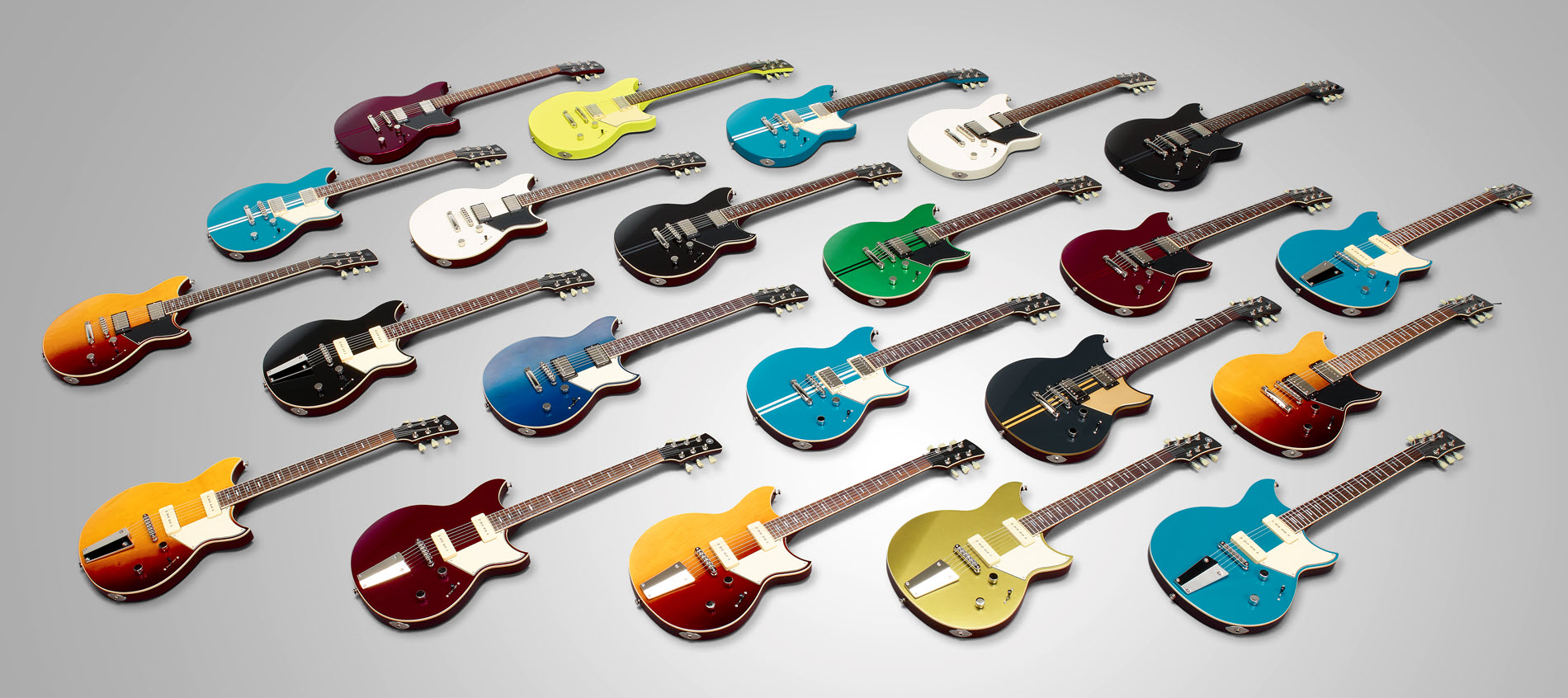
The second-generation Revstar guitars that debuted at the 2022 NAMM show represented a major leap forward in electric guitar technology. Though streamlined into three main categories Professional (RSP20), Standard (RSS20) and Element (RSE20), all second-generation models feature chambered mahogany bodies, a carbon-reinforced mahogany neck-through body design, rosewood fingerboards, jumbo frets (stainless steel on Professional and Standard models), humbucking or P90 pickups, new gloss finishes and satin finished necks that match the body color, as well as ivory-colored tuners that complement the unique headstock shape. Advanced features include a five-way selector switch (on Professional and Standard models) in combination with a unique passive boost on the tone control, as well as a “focus” switch — a passive boost that cuts the highs while boosting the low and mid frequencies to produce a sound similar to that of overwound pickups.
Discover the breakthrough Yamaha products announced at the 2018, 2019, 2020, 2021, 2022, 2023, 2024 and 2025 NAMM shows.













